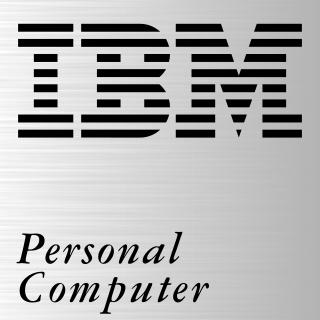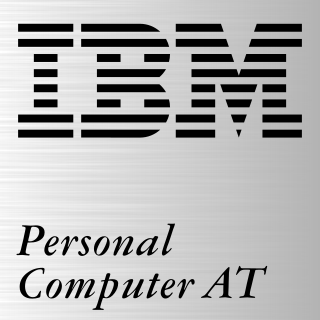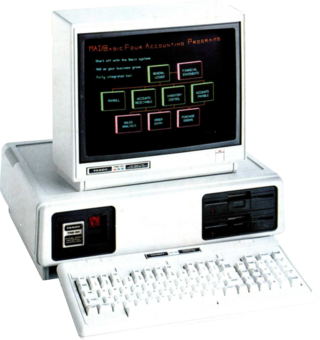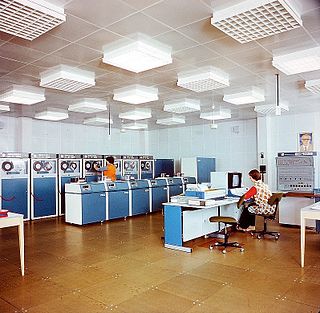
In computing, BIOS is firmware used to provide runtime services for operating systems and programs and to perform hardware initialization during the booting process. The BIOS firmware comes pre-installed on an IBM PC or IBM PC compatible's system board and exists in some UEFI-based systems to maintain compatibility with operating systems that do not support UEFI native operation. The name originates from the Basic Input/Output System used in the CP/M operating system in 1975. The BIOS originally proprietary to the IBM PC has been reverse engineered by some companies looking to create compatible systems. The interface of that original system serves as a de facto standard.

Industry Standard Architecture (ISA) is the 16-bit internal bus of IBM PC/AT and similar computers based on the Intel 80286 and its immediate successors during the 1980s. The bus was (largely) backward compatible with the 8-bit bus of the 8088-based IBM PC, including the IBM PC/XT as well as IBM PC compatibles.

The IBM Personal Computer is the first microcomputer released in the IBM PC model line and the basis for the IBM PC compatible de facto standard. Released on August 12, 1981, it was created by a team of engineers and designers at International Business Machines (IBM), directed by William C. Lowe and Philip Don Estridge in Boca Raton, Florida.

The Tandy 1000 is the first in a line of IBM PC compatible home computer systems produced by the Tandy Corporation for sale in its Radio Shack and Radio Shack Computer Center chains of stores. Introduced in 1984, the product line was aimed at providing affordable but capable systems for home computing or education, with some of its Tandy specific features like graphics, sound and joystick port making it more appealing for home use.

The Electronika BK is a series of 16-bit PDP-11-compatible home computers developed under the Electronika brand by NPO Scientific Center, then the leading microcomputer design team in the Soviet Union. It is also the predecessor of the more powerful UKNC and DVK micros.

The IBM Personal Computer AT was released in 1984 as the fourth model in the IBM Personal Computer line, following the IBM PC/XT and its IBM Portable PC variant. It was designed around the Intel 80286 microprocessor.

The Tandy 2000 is a personal computer introduced by Radio Shack in September 1983 based on the 8 MHz Intel 80186 microprocessor running MS-DOS. By comparison, the IBM PC XT used the older 4.77 MHz Intel 8088 processor, and the IBM PC/AT would later use the newer 6 MHz Intel 80286. Due to the 16-bit data bus and more efficient instruction decoding of the 80186, the Tandy 2000 ran significantly faster than other PC compatibles, and slightly faster than the PC AT. The Tandy 2000 was the company's first computer built around an Intel x86 series microprocessor; previous models used the Zilog Z80 and Motorola 6809 CPUs.

The history of computing hardware in the Eastern Bloc is somewhat different from that of the Western world. As a result of the CoCom embargo, computers could not be imported on a large scale from Western Bloc.

The ES EVM, or YeS EVM, also known in English literature as the Unified System or Ryad, is a series of mainframe computers generally compatible with IBM's System/360 and System/370 mainframes, built in the Comecon countries under the initiative of the Soviet Union between 1968 and 1998. More than 15,000 of the ES EVM mainframes were produced.

The Rainbow 100 is a microcomputer introduced by Digital Equipment Corporation (DEC) in 1982. This desktop unit had a monitor similar to the VT220 and a dual-CPU box with both 4 MHz Zilog Z80 and 4.81 MHz Intel 8088 CPUs. The Rainbow 100 was a triple-use machine: VT100 mode, 8-bit CP/M mode, and CP/M-86 or MS-DOS mode using the 8088. It ultimately failed to in the marketplace which became dominated by the simpler IBM PC and its clones which established the industry standard as compatibility with CP/M became less important than IBM PC compatibility. Writer David Ahl called it a disastrous foray into the personal computer market. The Rainbow was launched along with the similarly packaged DEC Professional and DECmate II which were also not successful. The failure of DEC to gain a significant foothold in the high-volume PC market would be the beginning of the end of the computer hardware industry in New England, as nearly all computer companies located there were focused on minicomputers for large organizations, from DEC to Data General, Wang, Prime, Computervision, Honeywell, and Symbolics Inc.

The Compaq Deskpro is a line of business-oriented desktop computers manufactured by Compaq, then replaced by the Evo brand in 2001. Models were produced containing microprocessors from the 8086 up to the x86-based Intel Pentium 4.
Since the rise of the personal computer in the 1980s, IBM and other vendors have created PC-based IBM mainframe-compatible systems which are compatible with the larger IBM mainframe computers. For a period of time PC-based mainframe-compatible systems had a lower price and did not require as much electricity or floor space. However, they sacrificed performance and were not as dependable as mainframe-class hardware. These products have been popular with mainframe developers, in education and training settings, for very small companies with non-critical processing, and in certain disaster relief roles.

The IBM 3270 PC, is a personal computer developed by IBM and released in October 1983. Although its hardware is mostly identical to the IBM PC XT, the 3270 contains additional components that, in combination with software, can emulate the behavior of an IBM 3270 terminal. Therefore, it can be used both as a standalone computer, and as a terminal to a mainframe.
The Commodore PC compatible systems are a range of IBM PC compatible personal computers introduced in 1984 by home computer manufacturer Commodore Business Machines.

The IBM Personal Computer XT is the second computer in the IBM Personal Computer line, released on March 8, 1983. Except for the addition of a built-in hard drive and extra expansion slots, it is very similar to the original IBM PC model 5150 from 1981.

The Radio-86RK is a build-it-yourself home computer designed in the Soviet Union. It was featured in the popular Radio magazine for radio hams and electronics hobbyists in 1986. The letters RK in the title stands for the words Radio ham's Computer. Design of the computer was published in a series of articles describing its logical structure, electrical circuitry, drawings of printed circuit boards and firmware. The computer could be built entirely out of standard off-the-shelf parts. Later it was also available in a kit form as well as fully assembled form.
The Main code page is an 8-bit code page used in DOS. It was devised in 1986 by a research group at the Academy of Science of the USSR. The other code page by the same group is known as the "Alternative code page" which is nearly identical to code page 866. Unlike the latter, the "Main code page" does not preserve the code points of the pseudographic symbols of code page 437. However, the majority of software at that period were made to be compatible with code page 437, as a result the Main code page has never gained any wide use. With the introduction of the Russian version of MS-DOS in 1990 which by default uses code page 866, the Main code page has become obsolete. Neither IBM nor Microsoft have ever supported this code page, so it has not been given its code page number by any vendor.
The Tandy 3000 is a personal computer introduced by Radio Shack in 1986 based on the 16-bit 8 MHz Intel 80286 microprocessor.

The Personal System/2 Model 30 and Personal System/2 Model 30 286 are IBM's entry-level desktop computers in their Personal System/2 (PS/2) family of personal computers. As opposed to higher-end entries in the PS/2 line which use Micro Channel bus architecture, the Model 30 features an Industry Standard Architecture bus, allowing it to use expansion cards from its direct predecessors, the PC/XT and the PC/AT. The original PS/2 Model 30, released in April 1987, is built upon the Intel 8086 microprocessor clocked at 8 MHz and features the 8-bit ISA bus; the Model 30 286, released in September 1988, features the Intel 80286 clocked at 10 MHz and includes the 16-bit ISA bus.



















